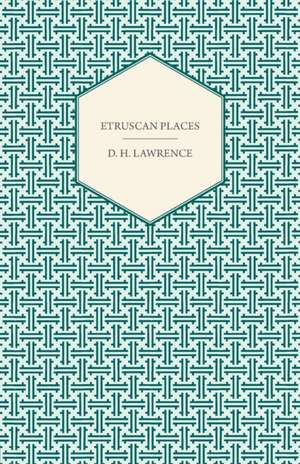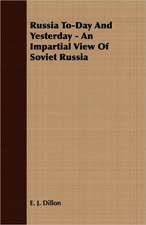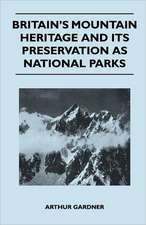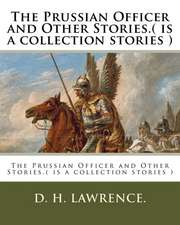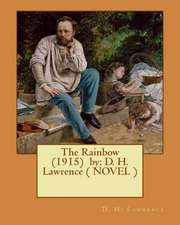Etruscan Places
Autor D. H. Lawrenceen Limba Engleză Paperback – 14 mar 2007
| Toate formatele și edițiile | Preț | Express |
|---|---|---|
| Paperback (2) | 69.70 lei 6-8 săpt. | +38.20 lei 7-13 zile |
| Bloomsbury Publishing – 17 apr 2019 | 69.70 lei 6-8 săpt. | +38.20 lei 7-13 zile |
| Leiserson Press – 14 mar 2007 | 181.31 lei 6-8 săpt. | |
| Hardback (1) | 292.90 lei 6-8 săpt. | |
| Leiserson Press – 3 noi 2008 | 292.90 lei 6-8 săpt. |
Preț: 181.31 lei
Nou
Puncte Express: 272
Preț estimativ în valută:
34.69€ • 36.30$ • 28.82£
34.69€ • 36.30$ • 28.82£
Carte tipărită la comandă
Livrare economică 02-16 aprilie
Preluare comenzi: 021 569.72.76
Specificații
ISBN-13: 9781406704006
ISBN-10: 1406704008
Pagini: 184
Dimensiuni: 140 x 216 x 11 mm
Greutate: 0.24 kg
Editura: Leiserson Press
ISBN-10: 1406704008
Pagini: 184
Dimensiuni: 140 x 216 x 11 mm
Greutate: 0.24 kg
Editura: Leiserson Press
Notă biografică
David Herbert Richards "D. H." Lawrence (11 September 1885 - 2 March 1930) was an English novelist, poet, playwright, essayist, literary critic and painter. His collected works represent, among other things, an extended reflection upon the dehumanising effects of modernity and industrialisation. Some of the issues Lawrence explores are emotional health, vitality, spontaneity and instinct.
Lawrence's opinions earned him many enemies and he endured official persecution, censorship, and misrepresentation of his creative work throughout the second half of his life, much of which he spent in a voluntary exile which he called his "savage pilgrimage." At the time of his death, his public reputation was that of a pornographer who had wasted his considerable talents. E. M. Forster, in an obituary notice, challenged this widely held view, describing him as, "The greatest imaginative novelist of our generation."
Lawrence is perhaps best known for his novels Sons and Lovers, The Rainbow, Women in Love and Lady Chatterley's Lover. Within these Lawrence explores the possibilities for life within an industrial setting. In particular Lawrence is concerned with the nature of relationships that can be had within such a setting. Though often classed as a realist, Lawrence in fact uses his characters to give form to his personal philosophy. His depiction of sexual activity, though seen as shocking when he first published in the early 20th century, has its roots in this highly personal way of thinking and being. It is worth noting that Lawrence was very interested in the sense of touch and that his focus on physical intimacy has its roots in a desire to restore an emphasis on the body, and re-balance it with what he perceived to be Western civilisation's over-emphasis on the mind.
Cuprins
Foreword by Michael Squires1. Cerveteri2. Tarquinia3. The Painted Tombs of Tarquinia4. The Painted Tombs of Tarquinia5. Vulci6. Volterra
Recenzii
He wrote something like three dozen books, of which even the worst page dances with life that could be mistaken for no other man's, while the best are admitted, even by those who hate him, to be unsurpassed.
He is an extraordinarily acute noticer of the world, human and natural. And it is not just the natural world that beckons Lawrence to flood it with beautiful language . . . he can be as precise and compact an observer of human interaction as Flaubert or Forster.
He is an extraordinarily acute noticer of the world, human and natural. And it is not just the natural world that beckons Lawrence to flood it with beautiful language . . . he can be as precise and compact an observer of human interaction as Flaubert or Forster.
